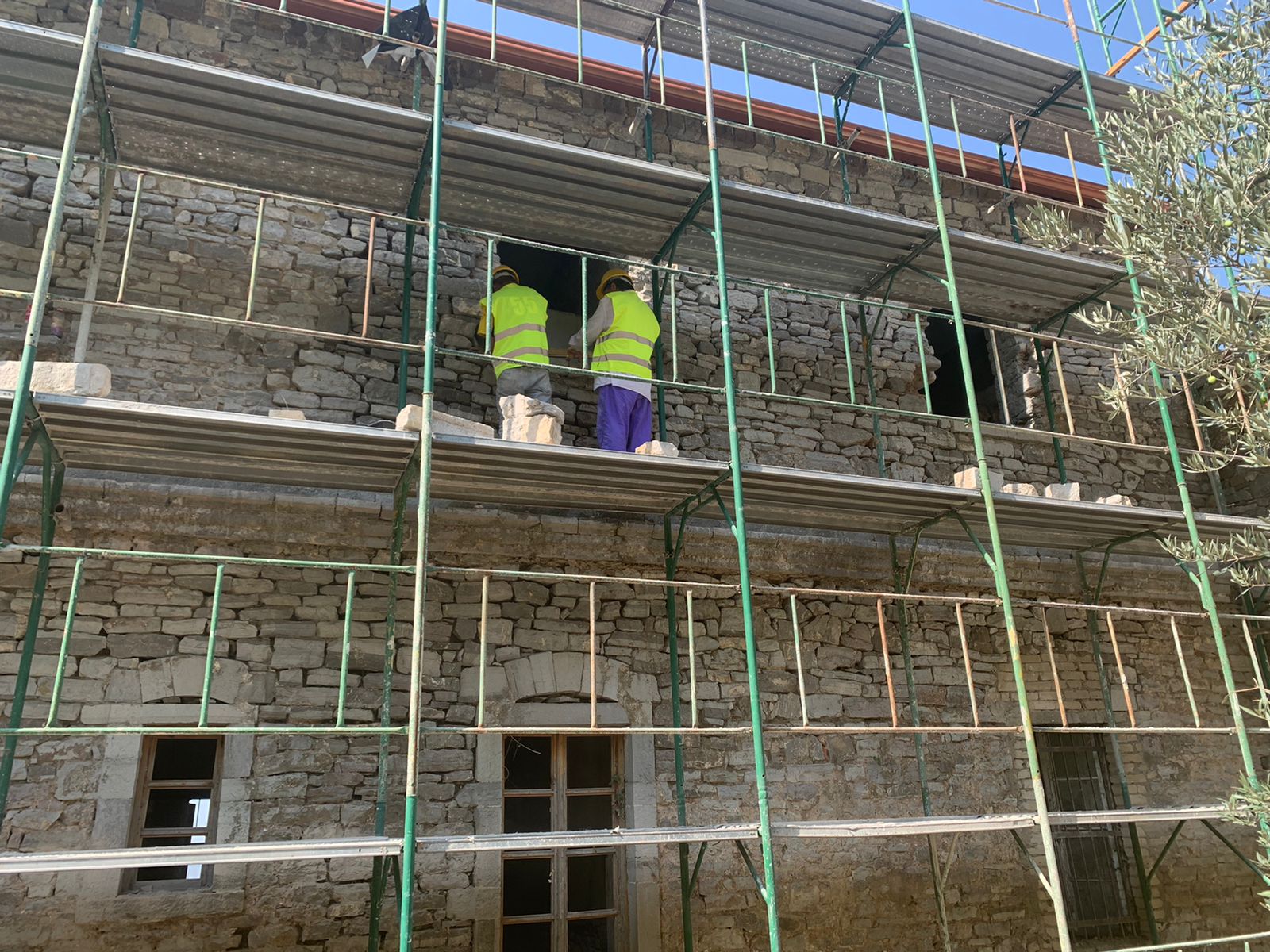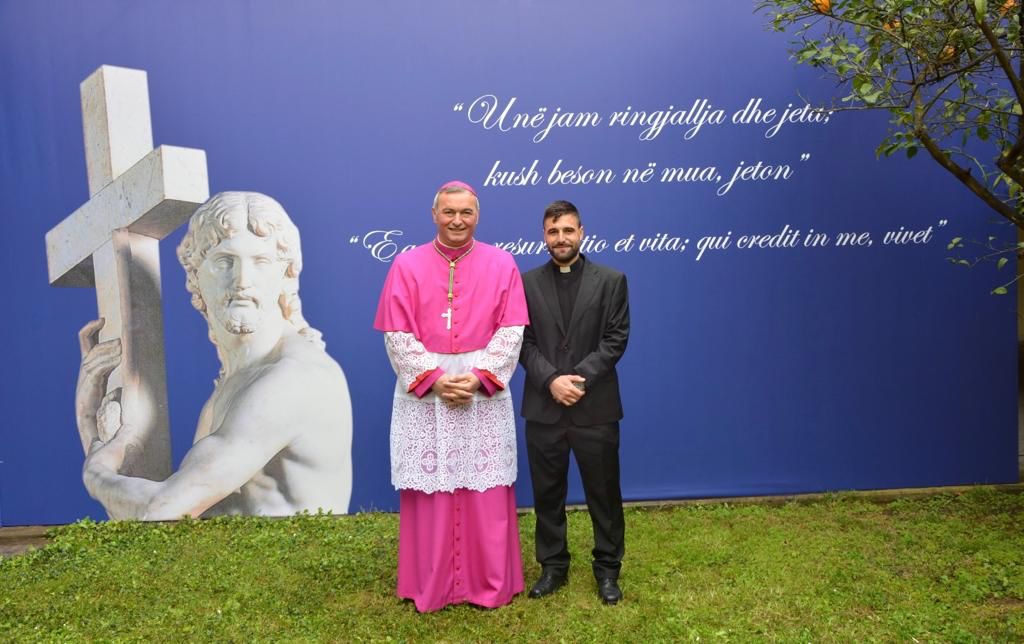
In 1850, Archbishop Raffaele D’Ambrosio encountered opposition from the Ottoman administration when attempting to establish the headquarters of the Catholic Church in Albania in Durrës. Consequently, he opted for Delbnisht as the new location. From this vantage point, the archbishop oversaw and guided a network of primarily eighteen parishes that had sprouted across the region, along with four other dioceses that had faded during the Ottoman administration. Moreover, this area served as a focal point for various assemblies dedicated to preserving cultural identity, particularly within the social and political realms during the Ottoman Empire’s rule. Under the leadership of this archbishopric, the first Albanian schools emerged in Shen e Premte of Kurbin in 1632, followed by establishments in Delbnisht itself in 1856, and later in Tirana and Durres in 1872. In 1903, 1904, and 1905, pivotal assemblies took place in Delbnisht, challenging the Ottoman government’s tax policies and asserting the rights of the people.
In this edifice, Archbishop Pren Bardh Kamberi made a momentous decision to dispatch his closest aide, Dom Nikollë Kaçorri, as the representative of Kurbin and all territories under the Archbishop of Durres’ jurisdiction, to attend the flag-raising ceremony in Vlora during the declaration of Independence on November 28, 1912. At 10 am on the same day, the order to raise the Albanian flag in Milot emanated from the Delbnisht building.This Archbishopric suffered significant damage at the hands of insurgents during a severe attack led by Haxhi Qamili against King Wilhelm zu Wied of Albania on September 1914. Around 1967, during the communist regime, the Church and the central headquarters of the Archbishopric were forcibly closed. Over the subsequent years, the site gradually deteriorated and fell into disrepair. However, this building possesses great historical significance, having been visited twice by the Albanian Saint, Mother Teresa of Calcutta, after 1990. The events associated with this structure are not only integral to the history of the Church but also to Albanian culture itself. As a result, the Ministry of Culture designated it a “cultural monument” on March 2014.
“Hence, this restoration holds significance in demonstrating, both physically and symbolically, the desire to reestablish a sense of belonging, not only within the Catholic Church but also across the entirety of Albanian society in its religious diversity.”
Don Massimiliano Maria Spezia F.d.C., the Judicial Vicar of the Tirana-Durrës Archbishopric
The former Archbishopric of Durres in Delbnisht (Laç) suffered extensive damage in the 2019 earthquake. Due to its profound historical significance, it was selected for restoration as part of the EU4 Culture project, funded by the EU and executed by UNOPS in Albania in close partnership with the Ministry of Culture.
Don Massimiliano Maria Spezia F.d.C., the Judicial Vicar of the Tirana-Durrës Archbishopric, elaborates on the importance of restoring this monument. He emphasises that this restoration aims to revive a site that encapsulates not only the recollection of historical events but also the connection to ethnological, social, and cultural values for which the nation’s forebears made immense sacrifices. “Hence, this restoration holds significance in demonstrating, both physically and symbolically, the desire to reestablish a sense of belonging, not only within the Catholic Church but also across the entirety of Albanian society in its religious diversity,” he affirms.
The restoration project for this building, with a total cost of 620,000 EUR, commenced in July 2022 and extended over a span of one year. The comprehensive works encompassed roof repairs, fortification of the structure’s core and adjacent edifices, and the meticulous restoration of windows, doors, floors, and finishes, all in accordance with approved designs. Furthermore, mechanical, electrical, and other fittings were replaced and modernised. The project also involved the excavation of a new well and the installation of high-voltage electrical cabling.
Lejla Hadzic from UNOPS elucidates that the building was in a severely dilapidated state due to both a lack of maintenance and additional damage incurred during the 2019 earthquake. She mentions that the restored building will serve a dual purpose, functioning as a kind of monastery. However, since this is a public investment, it will also be accessible for community use. “In this regard, the building’s first floor has been restored as dormitory rooms, while the ground floor will be utilised as kitchen space, dining areas, and living quarters. This way, local schoolchildren can utilise the space for homework or other school-related activities. Essentially, the community will have the opportunity to appreciate and use this space,” notes Lejla.

“The aim is to revitalise not only the Residence’s physical structure but also the entire surrounding area, transforming it into an accessible, visitable, and functional space for all. This comprehensive approach will encompass various facets, ranging from historical to naturalistic, thereby facilitating the rediscovery of the region’s history and the customs integral to both Christian and Albanian cultures.”
Don Massimiliano Maria Spezia F.d.C., the Judicial Vicar of the Tirana-Durrës Archbishopric
Don Massimiliano Maria Spezia envisions that the restored monument will exert a profound influence on both the Christian community and the wider Albanian populace, carrying significance in both social and spiritual dimensions. He explains that the social impact arises from Monsignor Dodaj’s aspiration, contingent on favourable conditions, particularly those concerning communication routes. “The aim is to revitalise not only the Residence’s physical structure but also the entire surrounding area, transforming it into an accessible, visitable, and functional space for all. This comprehensive approach will encompass various facets, ranging from historical to naturalistic, thereby facilitating the rediscovery of the region’s history and the customs integral to both Christian and Albanian cultures.”
About the project
In November 2019, Albania was hit by the country’s most deadly earthquake in the last 50 years. Estimated at a Richter magnitude 6.3, it caused extensive damage across 11 municipalities. The EU4Culture project is funded by the European Union (EU) and is implemented by the United Nations Office for Project Services (UNOPS) in close partnership with the Ministry of Culture of Albania. It focuses on renovation and revitalization of major cultural heritage sites damaged by the earthquake and represents one of the largest cultural heritage programmes funded by the European Union with a total budget of € 40 million. Guided by the “Building Back Better” principle, EU4Culture focuses on renovation of major cultural heritage sites in line with the UN Framework for Disaster Risk Reduction. In parallel, the project aims to enhance Albania’s tourism potential, thus directly contributing to local and regional socio-economic recovery. To that aim, special focus is given to innovative technologies, including digital story-telling and creation of multimedia products designed to be accessible for all. At the same time, the project is supporting local entrepreneurship, artisanship and cultural initiatives evolving around selected sites through the allocation of grants, providing a direct boost to the local economy.
Photo credits: EU4 Culture
In this edifice, Archbishop Pren Bardh Kamberi made a momentous decision to dispatch his closest aide, Dom Nikollë Kaçorri, as the representative of Kurbin and all territories under the Archbishop of Durres’ jurisdiction, to attend the flag-raising ceremony in Vlora during the declaration of Independence on November 28, 1912. At 10 am on the same day, the order to raise the Albanian flag in Milot emanated from the Delbnisht building.This Archbishopric suffered significant damage at the hands of insurgents during a severe attack led by Haxhi Qamili against King Wilhelm zu Wied of Albania on September 1914. Around 1967, during the communist regime, the Church and the central headquarters of the Archbishopric were forcibly closed. Over the subsequent years, the site gradually deteriorated and fell into disrepair. However, this building possesses great historical significance, having been visited twice by the Albanian Saint, Mother Teresa of Calcutta, after 1990. The events associated with this structure are not only integral to the history of the Church but also to Albanian culture itself. As a result, the Ministry of Culture designated it a “cultural monument” on March 2014.
The former Archbishopric of Durres in Delbnisht (Laç) suffered extensive damage in the 2019 earthquake. Due to its profound historical significance, it was selected for restoration as part of the EU4 Culture project, funded by the EU and executed by UNOPS in Albania in close partnership with the Ministry of Culture.
Don Massimiliano Maria Spezia F.d.C., the Judicial Vicar of the Tirana-Durrës Archbishopric, elaborates on the importance of restoring this monument. He emphasises that this restoration aims to revive a site that encapsulates not only the recollection of historical events but also the connection to ethnological, social, and cultural values for which the nation’s forebears made immense sacrifices. “Hence, this restoration holds significance in demonstrating, both physically and symbolically, the desire to reestablish a sense of belonging, not only within the Catholic Church but also across the entirety of Albanian society in its religious diversity,” he affirms.
The restoration project for this building, with a total cost of 620,000 EUR, commenced in July 2022 and extended over a span of one year. The comprehensive works encompassed roof repairs, fortification of the structure’s core and adjacent edifices, and the meticulous restoration of windows, doors, floors, and finishes, all in accordance with approved designs. Furthermore, mechanical, electrical, and other fittings were replaced and modernised. The project also involved the excavation of a new well and the installation of high-voltage electrical cabling.
Lejla Hadzic from UNOPS elucidates that the building was in a severely dilapidated state due to both a lack of maintenance and additional damage incurred during the 2019 earthquake. She mentions that the restored building will serve a dual purpose, functioning as a kind of monastery. However, since this is a public investment, it will also be accessible for community use. “In this regard, the building’s first floor has been restored as dormitory rooms, while the ground floor will be utilised as kitchen space, dining areas, and living quarters. This way, local schoolchildren can utilise the space for homework or other school-related activities. Essentially, the community will have the opportunity to appreciate and use this space,” notes Lejla.

Don Massimiliano Maria Spezia envisions that the restored monument will exert a profound influence on both the Christian community and the wider Albanian populace, carrying significance in both social and spiritual dimensions. He explains that the social impact arises from Monsignor Dodaj’s aspiration, contingent on favourable conditions, particularly those concerning communication routes. “The aim is to revitalise not only the Residence’s physical structure but also the entire surrounding area, transforming it into an accessible, visitable, and functional space for all. This comprehensive approach will encompass various facets, ranging from historical to naturalistic, thereby facilitating the rediscovery of the region’s history and the customs integral to both Christian and Albanian cultures.”
About the project
In November 2019, Albania was hit by the country’s most deadly earthquake in the last 50 years. Estimated at a Richter magnitude 6.3, it caused extensive damage across 11 municipalities. The EU4Culture project is funded by the European Union (EU) and is implemented by the United Nations Office for Project Services (UNOPS) in close partnership with the Ministry of Culture of Albania. It focuses on renovation and revitalization of major cultural heritage sites damaged by the earthquake and represents one of the largest cultural heritage programmes funded by the European Union with a total budget of € 40 million. Guided by the “Building Back Better” principle, EU4Culture focuses on renovation of major cultural heritage sites in line with the UN Framework for Disaster Risk Reduction. In parallel, the project aims to enhance Albania’s tourism potential, thus directly contributing to local and regional socio-economic recovery. To that aim, special focus is given to innovative technologies, including digital story-telling and creation of multimedia products designed to be accessible for all. At the same time, the project is supporting local entrepreneurship, artisanship and cultural initiatives evolving around selected sites through the allocation of grants, providing a direct boost to the local economy.
Photo credits: EU4 Culture
Please wait while your video is being uploaded...
Don't close this window!